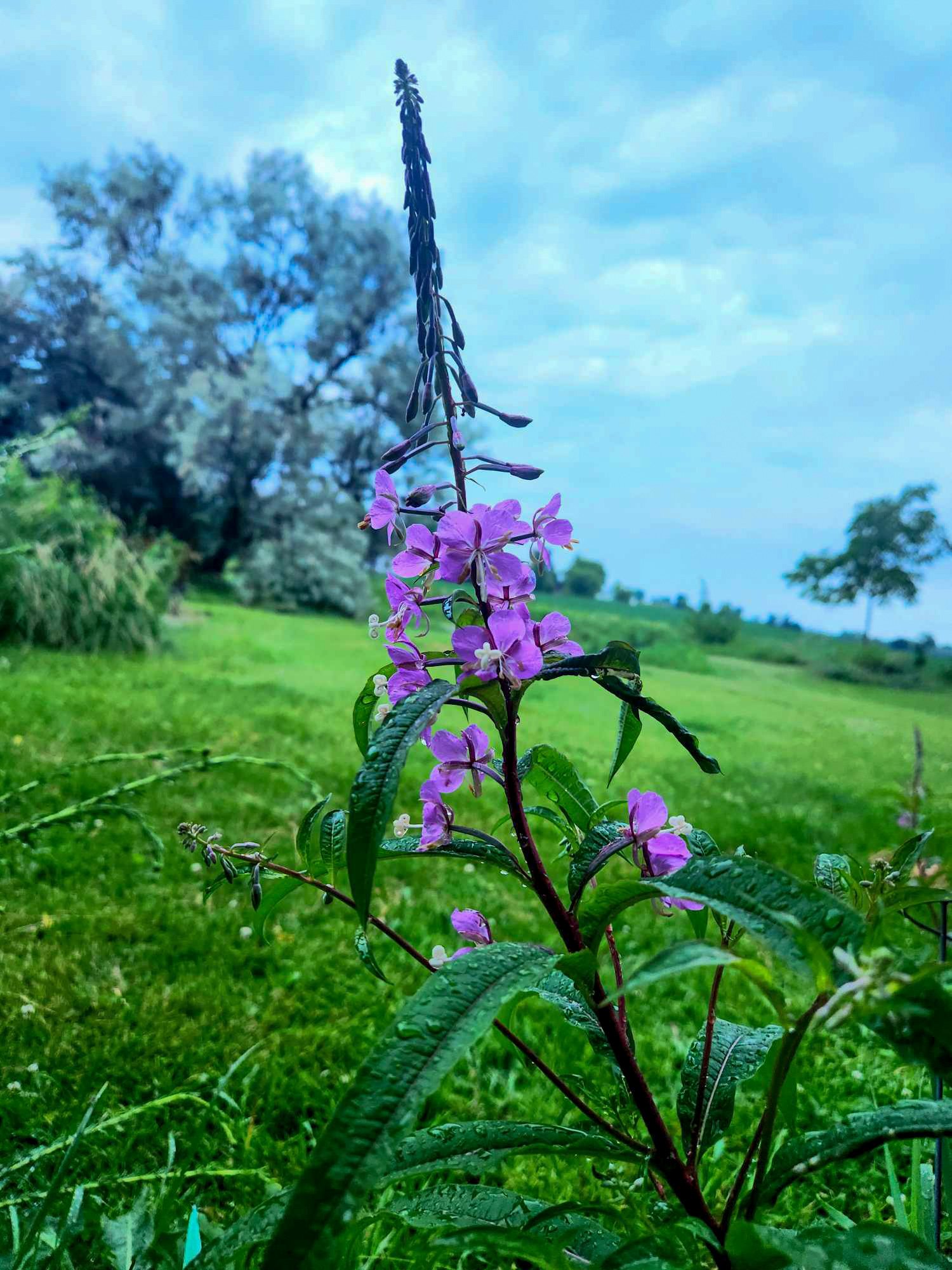 Image 1 of 6
Image 1 of 6

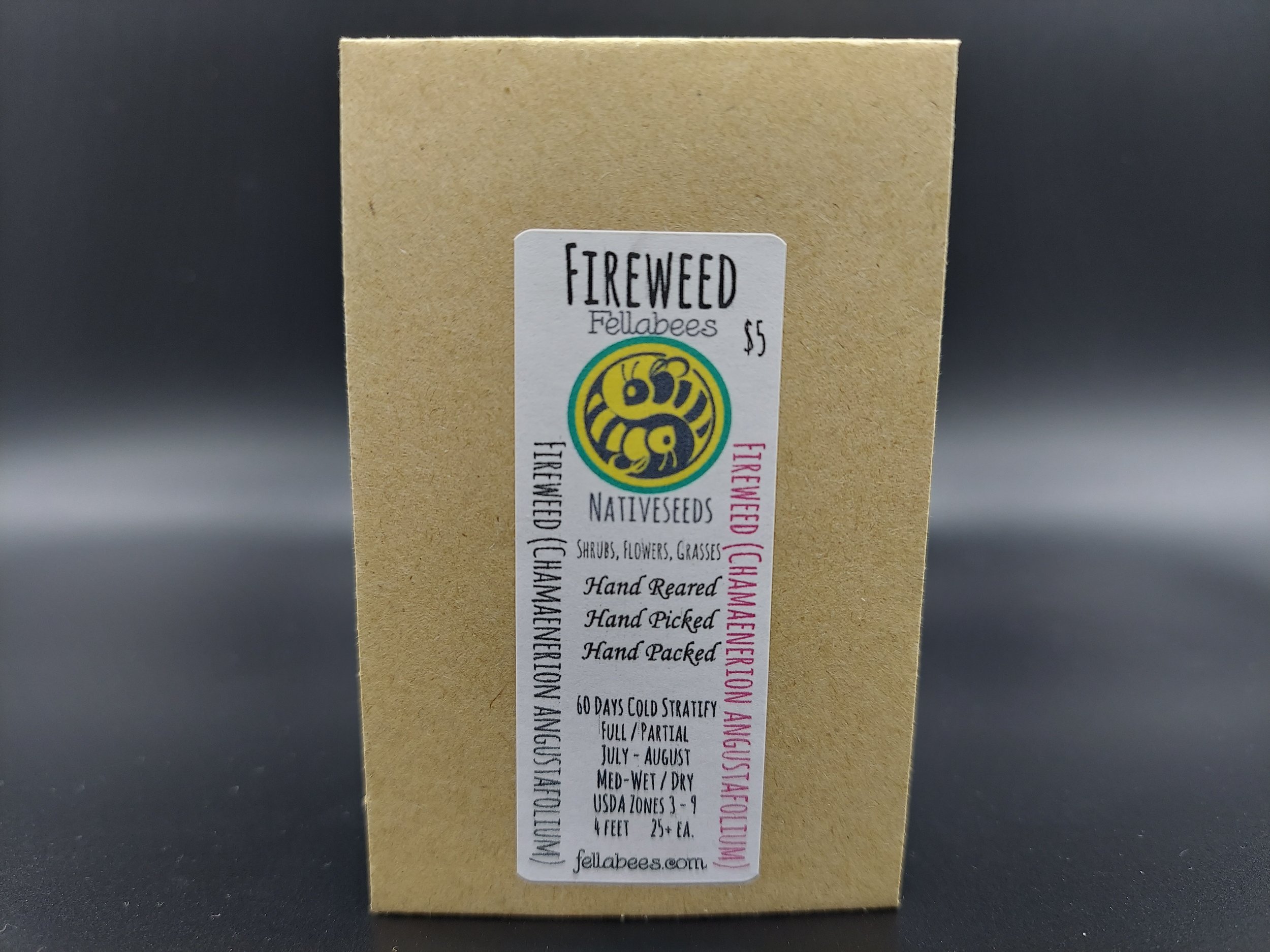 Image 2 of 6
Image 2 of 6

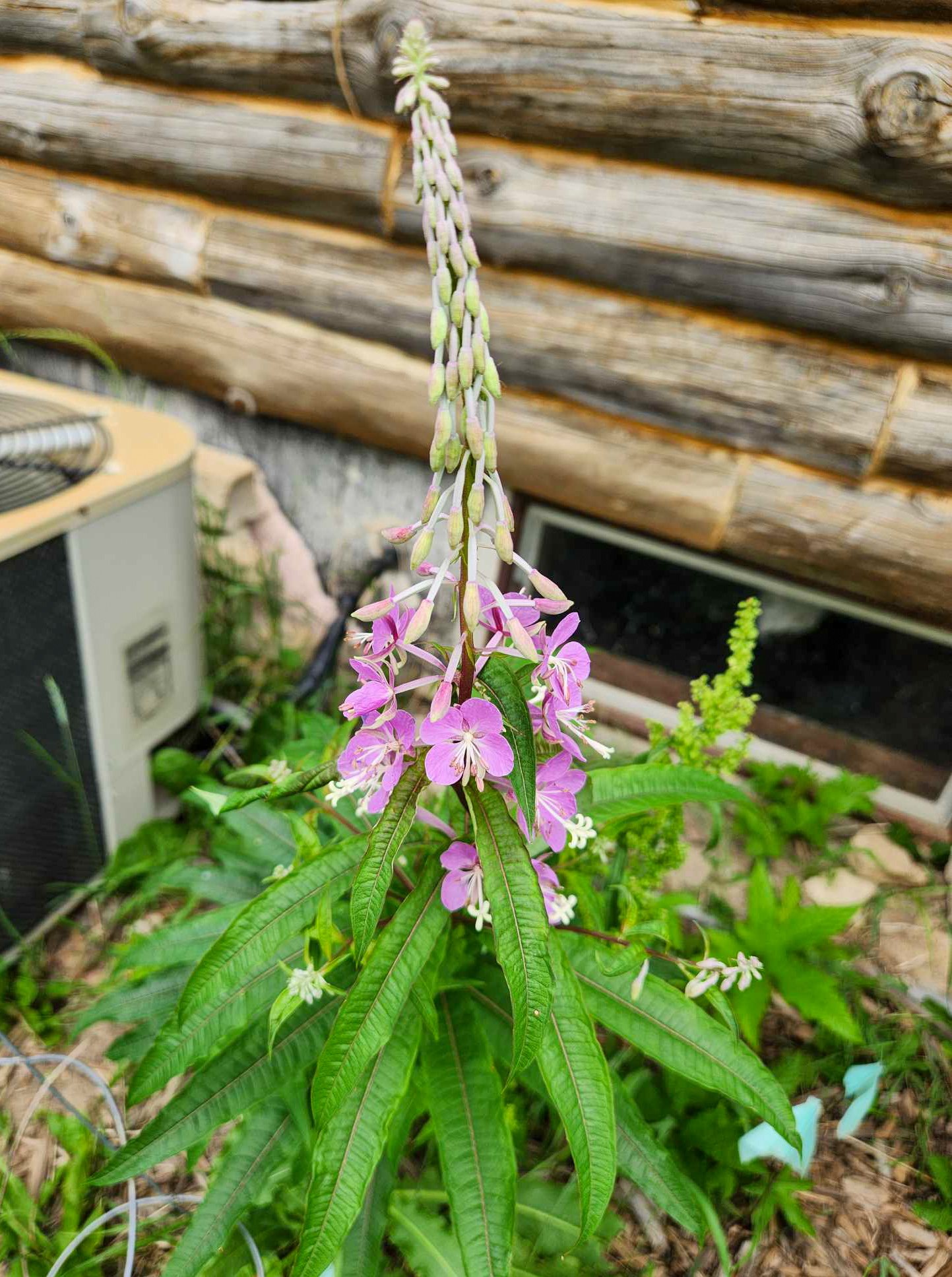 Image 3 of 6
Image 3 of 6

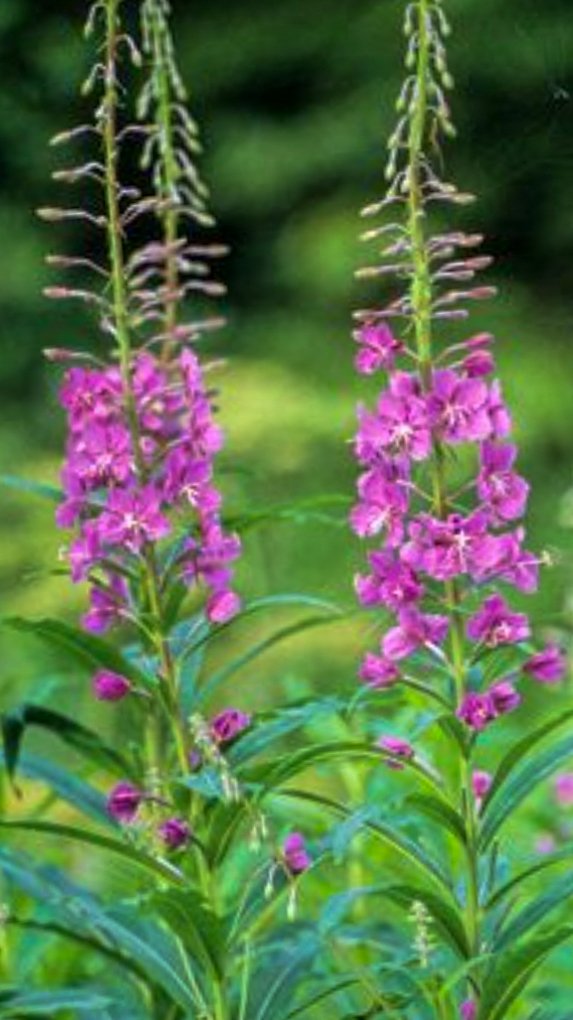 Image 4 of 6
Image 4 of 6

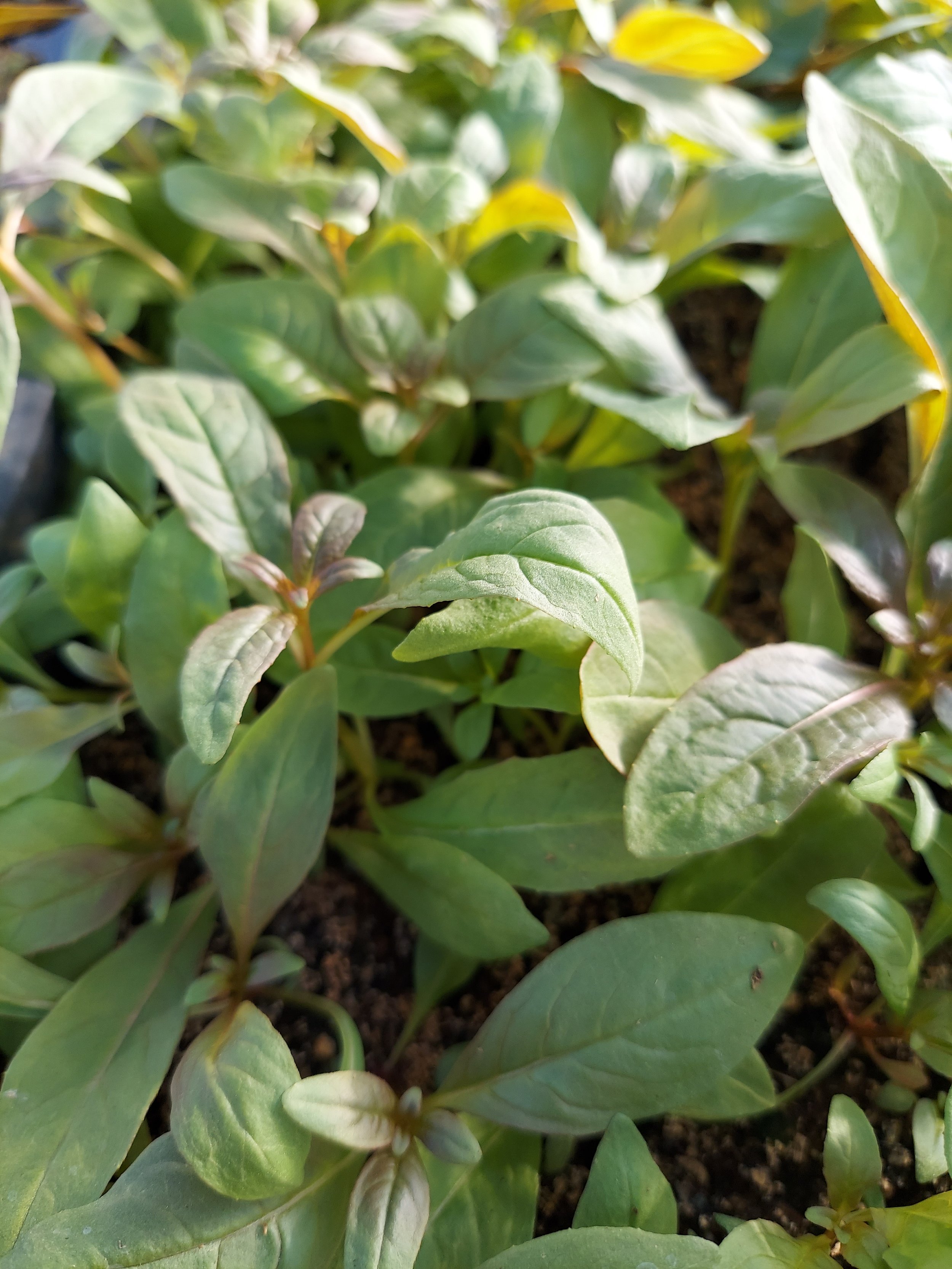 Image 5 of 6
Image 5 of 6

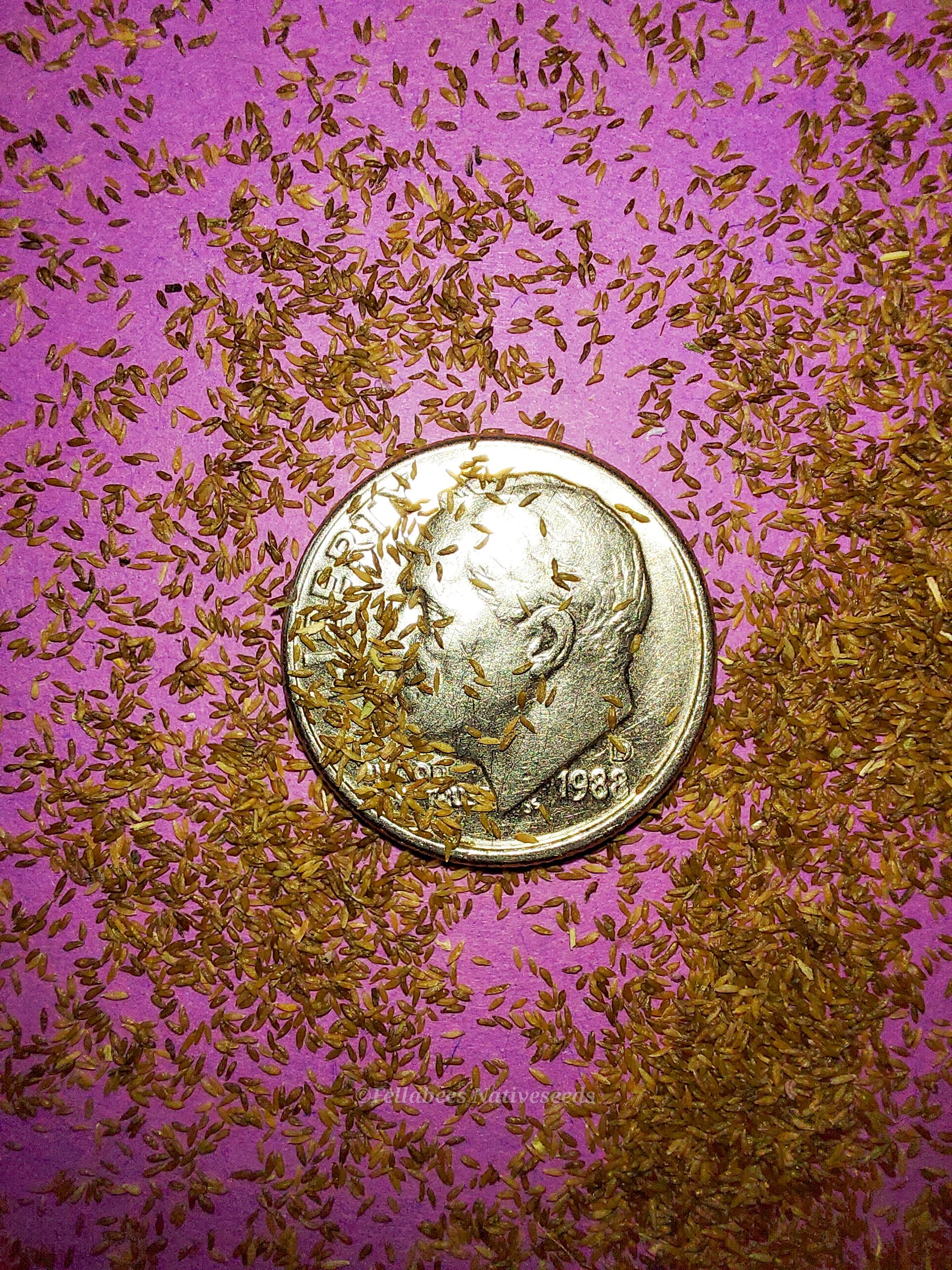 Image 6 of 6
Image 6 of 6







Fireweed (Chamaenerion angustifolium)
Fireweed (Chamaenerion angustifolium)
Chamaenerion angustifolium is the scientific name for the stunning perennial and herbaceous flowering plant in the willowherb family known as Onagraceae.
Chamaenerion angustafolium is known in North America by its common name as fireweed and in the British Isles as rosebay willowherb.
Native throughout the temperate Northern Hemisphere, including large parts of the boreal forests.
Fireweed is often abundant in wet calcareous to slightly acidic soils in open fields, pastures, and particularly burned-over lands.
It is considered a powerful pioneer species that quickly colonizes open areas where there is little competition, such as the sites of forest fires and forest clearings. Plants grow and flower as long as there is open space and plenty of light.
Fireweed reaches its average peak colonization after five years and then begins to be replaced as trees and brush grow larger. When a new fire or other disturbance occurs that opens up the ground to light again, the seeds germinate. Some areas with heavy seed counts in the soil can, after burning, be covered with pure dense stands of this species and when in flower the landscape is turned into astounding fields of color.
Fireweed is an effective colonizer; it may not be present until after a fire has moved through a landscape. Because of its very high dispersal capacity, "propagule pressure" from its regional presence will let it quickly colonize a disturbed area. Once seedlings are established, the plant quickly reproduces and covers the disturbed area via seeds and rhizomes.
Being well adapted to fire Fireweed as the ability to prevent the reintroduction of fire to the landscape. Fireweed is well adapted to seed in severely burned areas as well, because the mineral soil that is exposed due to the removal of organic soil layers provides a good seedbed.
In Britain the plant was considered a rare species in the 18th century, and one confined to a few locations with damp, gravelly soils. It was misidentified as great hairy willowherb in contemporary floras. The plant's rise from local rarity to widespread abundance seems to have occurred at the same time as the expansion of the railway network and the associated soil disturbance.
Consequently plant became locally known as 'bombweed' due to its rapid colonization of bomb craters in the Second World War.
Bears and elk are known to favor the plant as food.
Pollinators
The flowers are visited by a wide variety of insects. Some species in the insect order Lepidoptera (butterflies and moths) frequently use the Fireweed as their primary larval host-plant, examples including the Elephant Hawk Moth (Deilephila elpenor),the Bedstraw Hawk Moth (Hyles gallii), and the White-lined Sphinx Moth (Hyles lineata), all colloquially and generally called Hummingbird Moths here in the United States.
Human Uses
The plant is generally not considered palatable, but the young shoots and leaves can be cooked and eaten. The young flowers are also edible, and the stems of older plants can be split to extract the edible raw pith. Additionally, the leaves have historically been used for tea.
Traditionally the young shoots are collected in the spring by Indigenous Peoples of America as well as Siberian people and mixed with other greens. As the plant matures, the leaves become tough and somewhat bitter. Fireweed petals are made into jelly, and mature leaves are dried for use as tea. Roots are traditionally eaten raw by Siberian Native people.
When properly prepared soon after picking they are a good source of vitamin C and provitamin A. The Denaʼina People add Fireweed to their dogs' food. Fireweed is also a medicine of the Upper Inlet Dena'ina, who still treat pus-filled boils or cuts by placing a piece of the raw stem on the afflicted area. This is said to draw the pus out of the cut or boil and prevents a cut with pus in it from healing over too quickly.
The root can be roasted after scraping off the outside, but often tastes bitter. To mitigate this, the root is collected before the plant flowers and the brown thread in the middle removed. The stem centers can also be prepared by splitting the outer stalk, and eaten raw.
In Russia, Fireweed is made into a tea known as Ivan-Chai (Ivan-Tea) or Koporsky tea (from the town of Koporye, where it has been produced since the 13th century). They use it as highly prized medicinal herb too.
The popularity of fireweed tea perhaps stems from the similarity of its production to that of common black tea (Camellia sinensis), leading to a richly flavored and deeply colored herbal tea, with no caffeine, it is commercially sold in a blend with native mints or thyme. Fireweed tea is high in iron, copper, potassium and calcium.
In the Yukon, the flowers from fireweed are made into jelly.
The honey produced from fireweed is highly valued for its quality. Most fireweed honey is produced in locations in cool climates, such as the Pacific Northwest in the United States and Scandinavian countries in Europe.
Fireweed's natural variation in ploidy has prompted its use in scientific studies of the possible effects of polyploidy on adaptive potential and species diversification.
Land Management Uses
Fireweed can colonize disturbed sites, even following an old oil spill, it is often used to re-establish vegetation.
Events such as logging, fires and mass wasting can leave the land barren and without vegetation. This causes the land to be more susceptible to erosion because of the lack of root structure in the soil. Fireweed is a useful tool that can be utilized after prescribed fires and logging events because of its fire resistance and ability to recycle the nutrients left in the soil after a fire. It is also able to quickly establish a root system for reproduction and through this can prevent mass wasting and erosion events from occurring on burned or logged hillsides.
Reestablishment of vegetation is crucial in the recovery time of disturbed lands. In many cases, Fireweed establishes itself on these disturbed lands, but implementing the introduction of fireweed to a disturbed area as a management practice could prove useful in speeding up the recovery of disturbed lands. Disturbed and burned over lands are generally unpleasant to look at and pose a risk to habitats and nearby communities because of their susceptibility to mass wasting events. Fireweed can quickly establish itself across the landscape and prevent further damage, while providing a blanket of vegetation for recovering fauna to create new habitats in and for pollinators to foster the re-establishment of a diverse set of flora.
Plant Details
USDA Zones: 2-7
Germination Needs: 60 Days Cold Stratification, Seed is very small and likes soil contact and a view of the light to germinate. Surface sow and do not cover with more than a dusting if any soil. Keep moist until germination but not soaking, if growing in trays water from the bottom only.
Life Cycle: Perennial
Sun Exposure: Full to Partial
Soil Moisture: Medium-Wet, Medium, Medium-Dry
Plant Spacing: 1-2 feet
Height: 4 feet
Bloom time: July, August
Bloom Color: Pink
Advantages
Pollinator Favorite: butterflies, moths, bees, wasps, beetles
Bird Favorite: seeds, insects, fruit, nectar, nesting, perchs.
Deer Resistant: Yes
Excellent in the home landscape!
Native to: Wisconsin, Minnesota, Iowa, Illinois, Indiana, Michigan, Ohio, Pennsylvania, New York, Vermont, New Hampshire, Maine, Massachusetts, Rhode Island, Connecticut, Delaware, Maryland, New Jersey, West Virginia, Virginia, North Carolina, North Dakota, South Dakota, Nebraska, Montana, Wyoming, Idaho Colorado, New Mexico, Arizona, Utah, Nevada, California, Oregon and Washington State.
It can be found in Tennessee but has only one county where it is listed as native.
.
.
Packet quantities:
We pride ourselves on ethical, hands on, ecological management, using no mechanical or chemical methods whatsoever.
All of our native seed is hand reared, hand picked, and hand packed from native prairies under our exclusive management, never breaking chain of custody from the field until it is sent to you. Each packet is hand prepared for shipment by us, directly.
Small seed species will contain greater than 20-25 seed
Large seed species will contain greater than 10-15 seed
It is our mission to spread the wealth of native plant and pollinator ecological sustainability, and educate back yard gardeners as well as corporate and government entities in how to germinate, grow, and benefit from native synergies.
Thank you for your support, it is because of you, that we can grow together to do, what we do.🐛🦋🐝🐞🌾🌱🌼🧡
Fireweed (Chamaenerion angustifolium)
Chamaenerion angustifolium is the scientific name for the stunning perennial and herbaceous flowering plant in the willowherb family known as Onagraceae.
Chamaenerion angustafolium is known in North America by its common name as fireweed and in the British Isles as rosebay willowherb.
Native throughout the temperate Northern Hemisphere, including large parts of the boreal forests.
Fireweed is often abundant in wet calcareous to slightly acidic soils in open fields, pastures, and particularly burned-over lands.
It is considered a powerful pioneer species that quickly colonizes open areas where there is little competition, such as the sites of forest fires and forest clearings. Plants grow and flower as long as there is open space and plenty of light.
Fireweed reaches its average peak colonization after five years and then begins to be replaced as trees and brush grow larger. When a new fire or other disturbance occurs that opens up the ground to light again, the seeds germinate. Some areas with heavy seed counts in the soil can, after burning, be covered with pure dense stands of this species and when in flower the landscape is turned into astounding fields of color.
Fireweed is an effective colonizer; it may not be present until after a fire has moved through a landscape. Because of its very high dispersal capacity, "propagule pressure" from its regional presence will let it quickly colonize a disturbed area. Once seedlings are established, the plant quickly reproduces and covers the disturbed area via seeds and rhizomes.
Being well adapted to fire Fireweed as the ability to prevent the reintroduction of fire to the landscape. Fireweed is well adapted to seed in severely burned areas as well, because the mineral soil that is exposed due to the removal of organic soil layers provides a good seedbed.
In Britain the plant was considered a rare species in the 18th century, and one confined to a few locations with damp, gravelly soils. It was misidentified as great hairy willowherb in contemporary floras. The plant's rise from local rarity to widespread abundance seems to have occurred at the same time as the expansion of the railway network and the associated soil disturbance.
Consequently plant became locally known as 'bombweed' due to its rapid colonization of bomb craters in the Second World War.
Bears and elk are known to favor the plant as food.
Pollinators
The flowers are visited by a wide variety of insects. Some species in the insect order Lepidoptera (butterflies and moths) frequently use the Fireweed as their primary larval host-plant, examples including the Elephant Hawk Moth (Deilephila elpenor),the Bedstraw Hawk Moth (Hyles gallii), and the White-lined Sphinx Moth (Hyles lineata), all colloquially and generally called Hummingbird Moths here in the United States.
Human Uses
The plant is generally not considered palatable, but the young shoots and leaves can be cooked and eaten. The young flowers are also edible, and the stems of older plants can be split to extract the edible raw pith. Additionally, the leaves have historically been used for tea.
Traditionally the young shoots are collected in the spring by Indigenous Peoples of America as well as Siberian people and mixed with other greens. As the plant matures, the leaves become tough and somewhat bitter. Fireweed petals are made into jelly, and mature leaves are dried for use as tea. Roots are traditionally eaten raw by Siberian Native people.
When properly prepared soon after picking they are a good source of vitamin C and provitamin A. The Denaʼina People add Fireweed to their dogs' food. Fireweed is also a medicine of the Upper Inlet Dena'ina, who still treat pus-filled boils or cuts by placing a piece of the raw stem on the afflicted area. This is said to draw the pus out of the cut or boil and prevents a cut with pus in it from healing over too quickly.
The root can be roasted after scraping off the outside, but often tastes bitter. To mitigate this, the root is collected before the plant flowers and the brown thread in the middle removed. The stem centers can also be prepared by splitting the outer stalk, and eaten raw.
In Russia, Fireweed is made into a tea known as Ivan-Chai (Ivan-Tea) or Koporsky tea (from the town of Koporye, where it has been produced since the 13th century). They use it as highly prized medicinal herb too.
The popularity of fireweed tea perhaps stems from the similarity of its production to that of common black tea (Camellia sinensis), leading to a richly flavored and deeply colored herbal tea, with no caffeine, it is commercially sold in a blend with native mints or thyme. Fireweed tea is high in iron, copper, potassium and calcium.
In the Yukon, the flowers from fireweed are made into jelly.
The honey produced from fireweed is highly valued for its quality. Most fireweed honey is produced in locations in cool climates, such as the Pacific Northwest in the United States and Scandinavian countries in Europe.
Fireweed's natural variation in ploidy has prompted its use in scientific studies of the possible effects of polyploidy on adaptive potential and species diversification.
Land Management Uses
Fireweed can colonize disturbed sites, even following an old oil spill, it is often used to re-establish vegetation.
Events such as logging, fires and mass wasting can leave the land barren and without vegetation. This causes the land to be more susceptible to erosion because of the lack of root structure in the soil. Fireweed is a useful tool that can be utilized after prescribed fires and logging events because of its fire resistance and ability to recycle the nutrients left in the soil after a fire. It is also able to quickly establish a root system for reproduction and through this can prevent mass wasting and erosion events from occurring on burned or logged hillsides.
Reestablishment of vegetation is crucial in the recovery time of disturbed lands. In many cases, Fireweed establishes itself on these disturbed lands, but implementing the introduction of fireweed to a disturbed area as a management practice could prove useful in speeding up the recovery of disturbed lands. Disturbed and burned over lands are generally unpleasant to look at and pose a risk to habitats and nearby communities because of their susceptibility to mass wasting events. Fireweed can quickly establish itself across the landscape and prevent further damage, while providing a blanket of vegetation for recovering fauna to create new habitats in and for pollinators to foster the re-establishment of a diverse set of flora.
Plant Details
USDA Zones: 2-7
Germination Needs: 60 Days Cold Stratification, Seed is very small and likes soil contact and a view of the light to germinate. Surface sow and do not cover with more than a dusting if any soil. Keep moist until germination but not soaking, if growing in trays water from the bottom only.
Life Cycle: Perennial
Sun Exposure: Full to Partial
Soil Moisture: Medium-Wet, Medium, Medium-Dry
Plant Spacing: 1-2 feet
Height: 4 feet
Bloom time: July, August
Bloom Color: Pink
Advantages
Pollinator Favorite: butterflies, moths, bees, wasps, beetles
Bird Favorite: seeds, insects, fruit, nectar, nesting, perchs.
Deer Resistant: Yes
Excellent in the home landscape!
Native to: Wisconsin, Minnesota, Iowa, Illinois, Indiana, Michigan, Ohio, Pennsylvania, New York, Vermont, New Hampshire, Maine, Massachusetts, Rhode Island, Connecticut, Delaware, Maryland, New Jersey, West Virginia, Virginia, North Carolina, North Dakota, South Dakota, Nebraska, Montana, Wyoming, Idaho Colorado, New Mexico, Arizona, Utah, Nevada, California, Oregon and Washington State.
It can be found in Tennessee but has only one county where it is listed as native.
.
.
Packet quantities:
We pride ourselves on ethical, hands on, ecological management, using no mechanical or chemical methods whatsoever.
All of our native seed is hand reared, hand picked, and hand packed from native prairies under our exclusive management, never breaking chain of custody from the field until it is sent to you. Each packet is hand prepared for shipment by us, directly.
Small seed species will contain greater than 20-25 seed
Large seed species will contain greater than 10-15 seed
It is our mission to spread the wealth of native plant and pollinator ecological sustainability, and educate back yard gardeners as well as corporate and government entities in how to germinate, grow, and benefit from native synergies.
Thank you for your support, it is because of you, that we can grow together to do, what we do.🐛🦋🐝🐞🌾🌱🌼🧡
Fireweed (Chamaenerion angustifolium)
Chamaenerion angustifolium is the scientific name for the stunning perennial and herbaceous flowering plant in the willowherb family known as Onagraceae.
Chamaenerion angustafolium is known in North America by its common name as fireweed and in the British Isles as rosebay willowherb.
Native throughout the temperate Northern Hemisphere, including large parts of the boreal forests.
Fireweed is often abundant in wet calcareous to slightly acidic soils in open fields, pastures, and particularly burned-over lands.
It is considered a powerful pioneer species that quickly colonizes open areas where there is little competition, such as the sites of forest fires and forest clearings. Plants grow and flower as long as there is open space and plenty of light.
Fireweed reaches its average peak colonization after five years and then begins to be replaced as trees and brush grow larger. When a new fire or other disturbance occurs that opens up the ground to light again, the seeds germinate. Some areas with heavy seed counts in the soil can, after burning, be covered with pure dense stands of this species and when in flower the landscape is turned into astounding fields of color.
Fireweed is an effective colonizer; it may not be present until after a fire has moved through a landscape. Because of its very high dispersal capacity, "propagule pressure" from its regional presence will let it quickly colonize a disturbed area. Once seedlings are established, the plant quickly reproduces and covers the disturbed area via seeds and rhizomes.
Being well adapted to fire Fireweed as the ability to prevent the reintroduction of fire to the landscape. Fireweed is well adapted to seed in severely burned areas as well, because the mineral soil that is exposed due to the removal of organic soil layers provides a good seedbed.
In Britain the plant was considered a rare species in the 18th century, and one confined to a few locations with damp, gravelly soils. It was misidentified as great hairy willowherb in contemporary floras. The plant's rise from local rarity to widespread abundance seems to have occurred at the same time as the expansion of the railway network and the associated soil disturbance.
Consequently plant became locally known as 'bombweed' due to its rapid colonization of bomb craters in the Second World War.
Bears and elk are known to favor the plant as food.
Pollinators
The flowers are visited by a wide variety of insects. Some species in the insect order Lepidoptera (butterflies and moths) frequently use the Fireweed as their primary larval host-plant, examples including the Elephant Hawk Moth (Deilephila elpenor),the Bedstraw Hawk Moth (Hyles gallii), and the White-lined Sphinx Moth (Hyles lineata), all colloquially and generally called Hummingbird Moths here in the United States.
Human Uses
The plant is generally not considered palatable, but the young shoots and leaves can be cooked and eaten. The young flowers are also edible, and the stems of older plants can be split to extract the edible raw pith. Additionally, the leaves have historically been used for tea.
Traditionally the young shoots are collected in the spring by Indigenous Peoples of America as well as Siberian people and mixed with other greens. As the plant matures, the leaves become tough and somewhat bitter. Fireweed petals are made into jelly, and mature leaves are dried for use as tea. Roots are traditionally eaten raw by Siberian Native people.
When properly prepared soon after picking they are a good source of vitamin C and provitamin A. The Denaʼina People add Fireweed to their dogs' food. Fireweed is also a medicine of the Upper Inlet Dena'ina, who still treat pus-filled boils or cuts by placing a piece of the raw stem on the afflicted area. This is said to draw the pus out of the cut or boil and prevents a cut with pus in it from healing over too quickly.
The root can be roasted after scraping off the outside, but often tastes bitter. To mitigate this, the root is collected before the plant flowers and the brown thread in the middle removed. The stem centers can also be prepared by splitting the outer stalk, and eaten raw.
In Russia, Fireweed is made into a tea known as Ivan-Chai (Ivan-Tea) or Koporsky tea (from the town of Koporye, where it has been produced since the 13th century). They use it as highly prized medicinal herb too.
The popularity of fireweed tea perhaps stems from the similarity of its production to that of common black tea (Camellia sinensis), leading to a richly flavored and deeply colored herbal tea, with no caffeine, it is commercially sold in a blend with native mints or thyme. Fireweed tea is high in iron, copper, potassium and calcium.
In the Yukon, the flowers from fireweed are made into jelly.
The honey produced from fireweed is highly valued for its quality. Most fireweed honey is produced in locations in cool climates, such as the Pacific Northwest in the United States and Scandinavian countries in Europe.
Fireweed's natural variation in ploidy has prompted its use in scientific studies of the possible effects of polyploidy on adaptive potential and species diversification.
Land Management Uses
Fireweed can colonize disturbed sites, even following an old oil spill, it is often used to re-establish vegetation.
Events such as logging, fires and mass wasting can leave the land barren and without vegetation. This causes the land to be more susceptible to erosion because of the lack of root structure in the soil. Fireweed is a useful tool that can be utilized after prescribed fires and logging events because of its fire resistance and ability to recycle the nutrients left in the soil after a fire. It is also able to quickly establish a root system for reproduction and through this can prevent mass wasting and erosion events from occurring on burned or logged hillsides.
Reestablishment of vegetation is crucial in the recovery time of disturbed lands. In many cases, Fireweed establishes itself on these disturbed lands, but implementing the introduction of fireweed to a disturbed area as a management practice could prove useful in speeding up the recovery of disturbed lands. Disturbed and burned over lands are generally unpleasant to look at and pose a risk to habitats and nearby communities because of their susceptibility to mass wasting events. Fireweed can quickly establish itself across the landscape and prevent further damage, while providing a blanket of vegetation for recovering fauna to create new habitats in and for pollinators to foster the re-establishment of a diverse set of flora.
Plant Details
USDA Zones: 2-7
Germination Needs: 60 Days Cold Stratification, Seed is very small and likes soil contact and a view of the light to germinate. Surface sow and do not cover with more than a dusting if any soil. Keep moist until germination but not soaking, if growing in trays water from the bottom only.
Life Cycle: Perennial
Sun Exposure: Full to Partial
Soil Moisture: Medium-Wet, Medium, Medium-Dry
Plant Spacing: 1-2 feet
Height: 4 feet
Bloom time: July, August
Bloom Color: Pink
Advantages
Pollinator Favorite: butterflies, moths, bees, wasps, beetles
Bird Favorite: seeds, insects, fruit, nectar, nesting, perchs.
Deer Resistant: Yes
Excellent in the home landscape!
Native to: Wisconsin, Minnesota, Iowa, Illinois, Indiana, Michigan, Ohio, Pennsylvania, New York, Vermont, New Hampshire, Maine, Massachusetts, Rhode Island, Connecticut, Delaware, Maryland, New Jersey, West Virginia, Virginia, North Carolina, North Dakota, South Dakota, Nebraska, Montana, Wyoming, Idaho Colorado, New Mexico, Arizona, Utah, Nevada, California, Oregon and Washington State.
It can be found in Tennessee but has only one county where it is listed as native.
.
.
Packet quantities:
We pride ourselves on ethical, hands on, ecological management, using no mechanical or chemical methods whatsoever.
All of our native seed is hand reared, hand picked, and hand packed from native prairies under our exclusive management, never breaking chain of custody from the field until it is sent to you. Each packet is hand prepared for shipment by us, directly.
Small seed species will contain greater than 20-25 seed
Large seed species will contain greater than 10-15 seed
It is our mission to spread the wealth of native plant and pollinator ecological sustainability, and educate back yard gardeners as well as corporate and government entities in how to germinate, grow, and benefit from native synergies.
Thank you for your support, it is because of you, that we can grow together to do, what we do.🐛🦋🐝🐞🌾🌱🌼🧡
